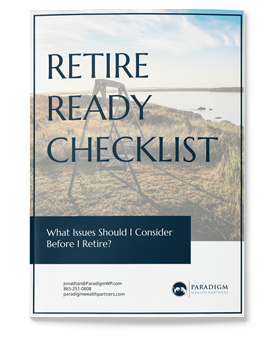
JENNA
Single Working Professional
Quick Facts
- Jenna is a 35-year old single female.
- She has student loan debt but needs to start saving for retirement.
Goals
- Jenna wants to pay off her debts.
- The faster she pays off her debt, the faster she can start savings for the future and eliminate the debt pressure and liability.
- Wants work to be optional by age 55
Background
Jenna worked hard all through college, but like many college graduates still has more than $52,000 in college debt at the age of 35. She also has a car loan of $24,000. With her annual take-home income of approximately $72,000 a year, Jenna is overwhelmed with how to pay off her standing debts on top of trying to save for retirement and a rainy day fund, in the short term.
Challenges
Jenna has a decent amount of debt that keeps her awake at night; about $75,000 overall. She has approximately 20 years of working left before her goal retirement age so how can she comfortably pay down the debts while saving for the future, and still live her life.
Strategies to Consider
Consider meeting with a CERTIFIED FINANCIAL PLANNER™ Professional to discuss creating a debt snowball plan, listing debts from smallest to largest. With this plan, she applies minimum payments to all debts and applied extra payments to the smallest loan first. Seeing a loan, even a small one, get paid off is motivating, helping to create momentum to paying off more loans.
As an added bonus, Jenna found a quick way pay off the smallest loan. Jenna’s grandmother put aside money in savings bonds for her when she was a child. By using treasurydirect.gov, she found that the bonds were valued at $11,500. She used most of that to pay off her smallest loan and some towards the next-to-smallest loan.
Jenna can also discuss if she should suspend her Roth IRA contributions and used that money to pay down her student loan debts. However, she still contributes her 401K contributions to get a match from her employer.
Potential Next Steps
Jenna could use $1,500 of the $11,500 from her grandmother’s savings bond to create a simple emergency fund. Over the next 3-5 years, Jenna should be finished paying off all of her existing loans. This could create a new revenue stream to invest into a ROTH IRA for future savings. After her debt snowball is complete, Jenna could create an emergency fund to cover 6 to 9 months’ worth of living expenses. Jenna then could work with a CERTIFIED FINANCIAL PLANNER™ Professional to create investment strategies and consider starting a Health Savings Account or HSA
This is a Hypothetical example used for illustrative purposes only. The strategies discussed in this example may not be suitable for all readers. Please consult a CFP® Professional, CPA, or attorney prior to taking any action. No strategy assures success or protects against loss.

